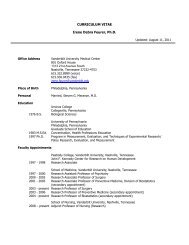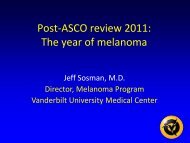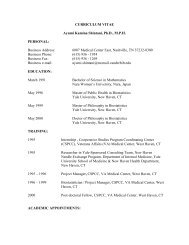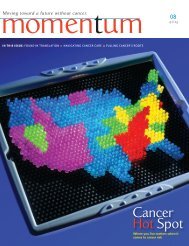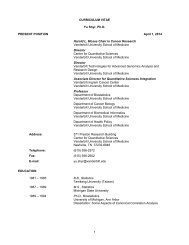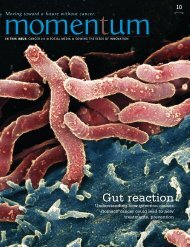Confounding, interaction, and mediation in multivariable/multivariate ...
Confounding, interaction, and mediation in multivariable/multivariate ...
Confounding, interaction, and mediation in multivariable/multivariate ...
Create successful ePaper yourself
Turn your PDF publications into a flip-book with our unique Google optimized e-Paper software.
Mediation<br />
<strong>Confound<strong>in</strong>g</strong><br />
Interaction<br />
Def<strong>in</strong>ition <strong>and</strong> determ<strong>in</strong>ation<br />
Methods for confound<strong>in</strong>g effect<br />
Unobserved confound<strong>in</strong>g<br />
Difference from <strong>mediation</strong><br />
How to pick potential confounders<br />
statistically<br />
ˆ When you get to do<strong>in</strong>g <strong>multivariable</strong> logistic regression, for example, one rule of<br />
thumb is that if the odds ratio changes by 10% or more then this is reason to<br />
<strong>in</strong>clude the potential confounder <strong>in</strong> your multi-variable model. We don’t tend to<br />
look at just whether it is statistically significant, but <strong>in</strong>stead, how much does it<br />
change with this effect. This change is what we want to measure. If it changes<br />
the effect by 10% or more, then we consider it a confounder <strong>and</strong> leave it <strong>in</strong> the<br />
model.<br />
ˆ P values will not tell confound<strong>in</strong>g effect. Rather, only, change <strong>in</strong> β between with<br />
adjustment <strong>and</strong> w/o adjustment can tell if the confound<strong>in</strong>g is work<strong>in</strong>g.<br />
logo<br />
William Wu<br />
Cancer Biostatistics





